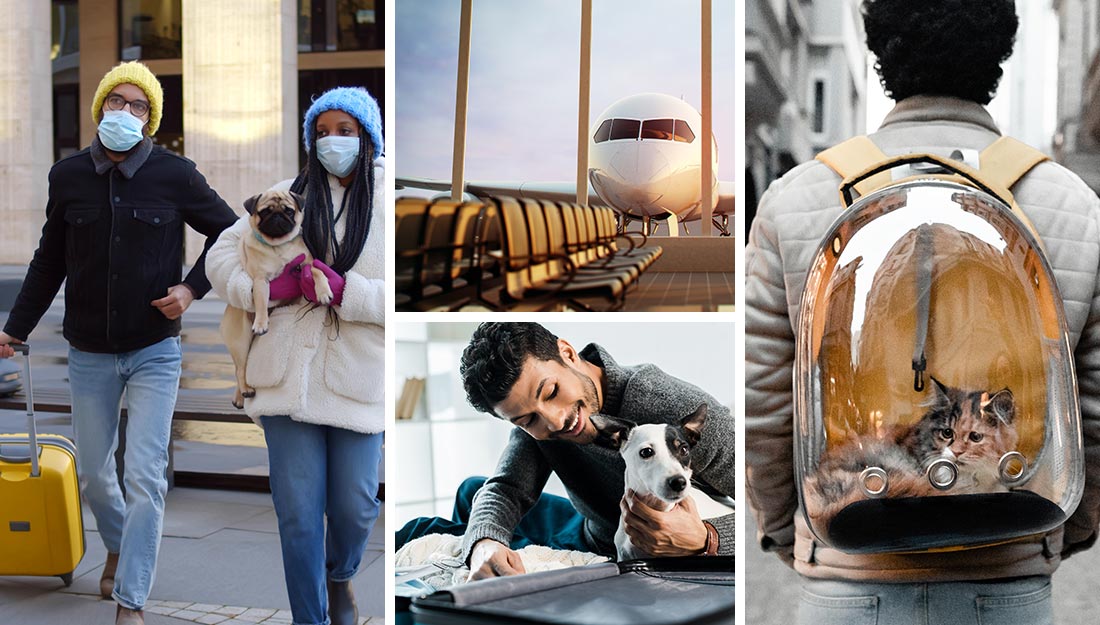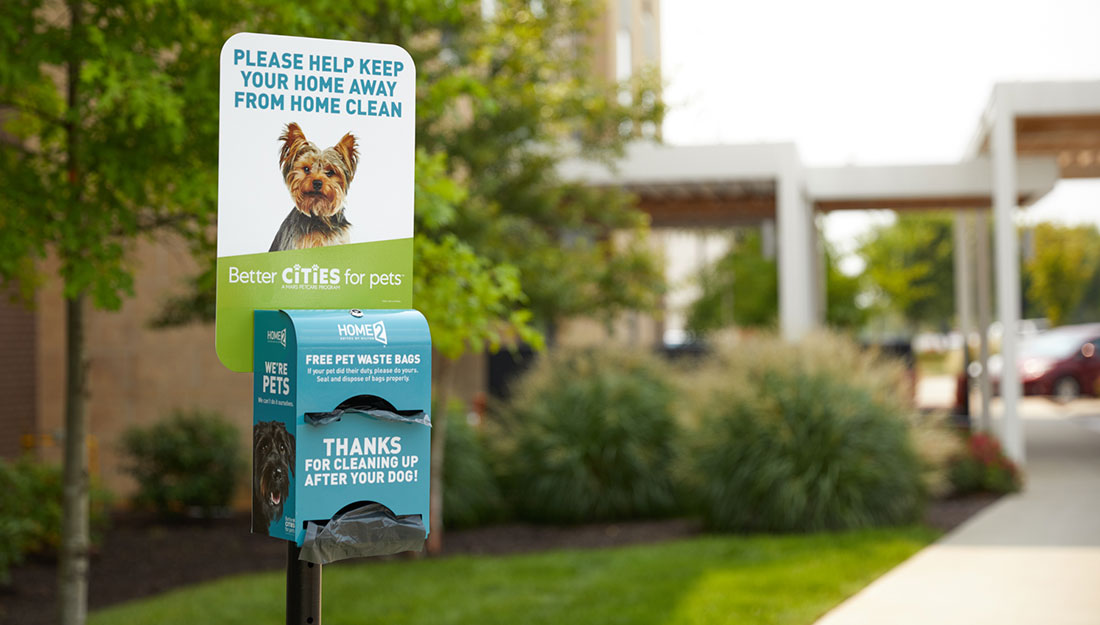While staying at a hotel with your pets, chances are you’ll venture out of your room together – especially if your pet is a dog. Here are some tips to help dog-to-dog and dog-to-person introductions go well.
Dog-to-Dog Introductions
Dog greetings are very different from human greetings, so it’s important to recognize what’s happening when you encounter another dog.
Signs of a polite greeting include:
- Approaching at an angle (not straight on)
- Loose bodies and jaws
- Sniffing each other’s rear ends
If your dog is having a polite greeting, allow it to continue for a few seconds, then move the dogs apart to give them a break.
Signs of an impolite greeting include:
- Approaching straight on
- Rushing or stalking
- Stiff body posture
- Placing their head over the other dog’s back and shoulders
If your dog is having an impolite greeting, interrupt it immediately by separating the dogs to ensure it doesn’t escalate.
Facilitate positive meet and greets between dogs with these tips:
- Always have your dog on their leash anytime you aren’t in your hotel room. It helps you remain in control no matter who you meet.
- If you and another dog parent have chosen to introduce your dogs, make sure you are both there to supervise. Never try to introduce two dogs with just one person available.
- Use the 3-second rule for initial greetings. Allow the dogs to sniff each other for 3 seconds, then move them apart. Repeat the process a few days in a row to let the dogs grow familiar and confident around each other.
- Use positive reinforcement, such as praise, after successfully meeting new dogs. But don’t give a treat in front of another dog, since that could lead to competition over the treat.
- Make sure to watch your dog’s body language and stop a meet and greet if they become overstimulated, fearful or uncomfortable.
Dog-To-Person Introductions
You are likely to meet people at the hotel as you come and go with your dog. Keep these tips in mind to make sure introductions go well.
Be your dog’s champion:
- Know your dog’s body language and only let someone speak to or touch your dog if you think the contact is welcome.
- Don’t be shy about asking for space when it comes to your dog’s wellbeing. It’s okay to tell someone that it’s not a good time for an introduction.
- Always keep your dog leashed in public places, so you can guide them away from people or other pets as needed.
- Never try to introduce your dog to someone if your dog appears nervous or uncomfortable, is growling or barking, or is pulling away.
- Be especially cautious around kids, even if they are eager to meet your dog. Children might not know how to interact with a dog or might make sudden movements that make your dog feel threatened.
If you think your dog is open to meeting someone, tell them how to make it a success:
- Dogs can feel threatened when someone stands or bends over them. Encourage the person to squat down at a distance, so the dog can come to them if they want to.
- If your dog walks toward the person with positive body language (relaxed body, tail wagging, etc.), let the greeting proceed. Remind the person that petting on the head can feel threatening to a dog. Pet on the side or neck.
- If your dog pulls back or displays negative body language (stiff body, tail lowered, ears back, etc.), it’s not a good time for a greeting. Encourage the person to move away and save the introduction for another time.
- Use positive reinforcement after successfully meeting a new person. You can give praise or, if there isn’t another dog nearby, offer a treat.





 Your Privacy Choices
Your Privacy Choices